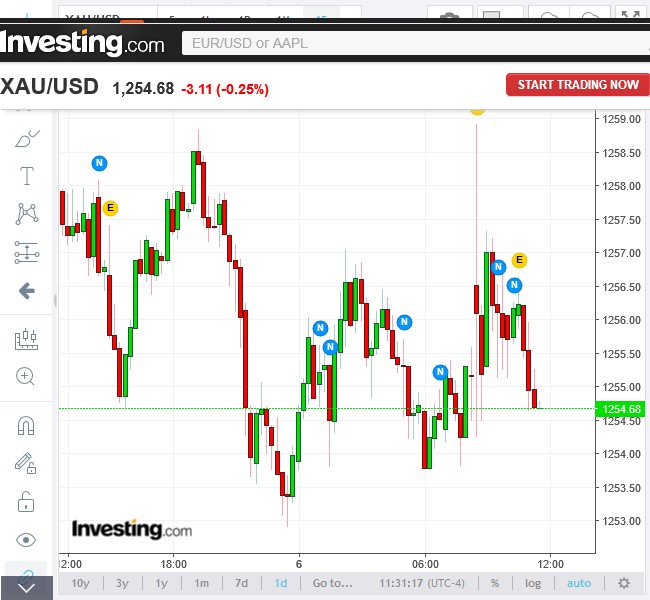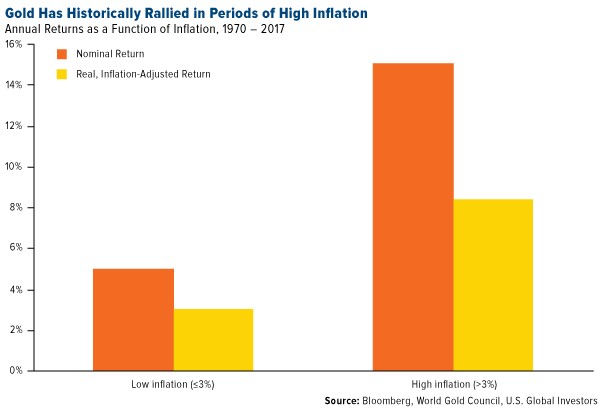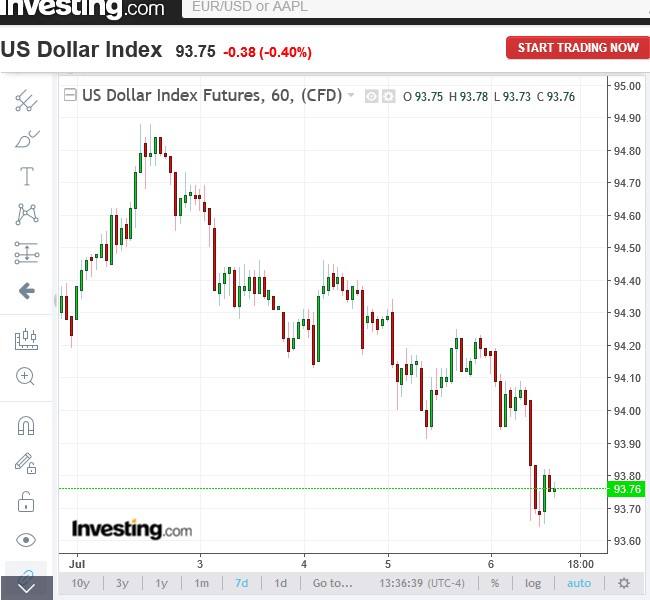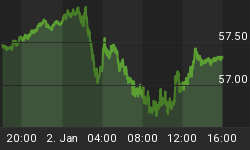Gold prices have kicked off Friday trading on a sour note, dropping $3.11 (0.25 percent) at 11:30 am EST, just hours after the U.S. made good on its promise to impose tariffs on $34 billion worth of industrial goods, airplane tires, water boilers and X-ray machine components imported from China.
The tariffs came into effect at precisely midnight June 6.
Not surprisingly, Beijing has responded in kind with state news agency Xinhua reporting that China has implemented retaliatory tariffs on U.S. goods including electric vehicles, soy beans and pork for a similar amount and tariff rate as Washington’s.
The trade war kickoff coincided with a mixed non-farm payroll jobs report coming from the Bureau of Labor Statistics that showed that 213,000 new jobs were created in the month of June but unemployment increased to 4.0 percent from 3.8 percent the previous month while, more importantly, wages increased a mere 0.2 percent compared to 0.3 percent in May.

(Click to enlarge)
Source: Investing.com
Inflationary Tariffs Could Supercharge Gold
China, which all along has avoided firing the first shot, labeled the U.S. “a bully” responsible for launching the “biggest trade war in history”.
Trump’s administration, for its part, has been very unrelenting and appears hell-bent on stopping China from what it terms as unfair trade practices that allow it to build a huge trade surplus as well as expropriating American technology.
Although Washington and Beijing held several high-level talks in May to try and alleviate the dispute, nothing concrete was agreed upon, and since then, Trump has announced his intention to ratchet up the stakes by bringing another $16 billion in Chinese imports under tariffs in a matter of weeks and eventually target measures totaling $500 billion.
Now that looks like the making of a really, really big trade war. In fact the China tariffs could end up being over 10x more than the steel and aluminum tariffs imposed by Trump earlier in the year since steel and aluminum imports into the US only amounted to $52.4 billion in 2017.
Not to mention another 25-percent tariff on nearly $70 billion worth of automobile imports from the EU.
And the fact that history has shown that rising tariffs usually hurt the economy. Related: Europe’s Looming Pension Crisis
Higher inflation has historically been bullish for gold prices, with annual gold returns averaging 15 percent in years when inflation clocked in at 3 percent or higher (currently at 2.8 percent and climbing).

(Click to enlarge)
Source: Trading Economics

(Click to enlarge)
Source: BullionVault
This looks like fertile ground for tariff-induced inflation, which could supercharge the yellow metal.
Short-Term Risks
The bullish gold thesis is not without risks, though--especially in the near-term. Gold has faced significant selling pressure this year due to a strengthening dollar:

(Click to enlarge)
Source: MacroTrends
Gold price movements are almost a mirror image of the dollar index:

(Click to enlarge)
Source: Kitco
The good news for gold bulls is that dollar strength is largely shaped by geopolitical and economic events such as the ones mentioned above. That’s a big reason why the greenback has dropped sharply over the past few days (down 0.4 percent today):

(Click to enlarge)
Source: Investing.com
The immediate risk for gold though lies on the technical side. Both the RSI and the Stochastic are close to overbought levels courtesy of last week’s rally. The resistance and support levels are as follows:
Resistance: 1255 - 1259 - 1264
Support: 1245-1239-1219

(Click to enlarge)
Source: Trading Peek
The sideways movement and overbought levels increase the risk that prices could gap lower and test the $1,245 level again before rebounding to the $1,265 target level.
By Alex Kimani for Safehaven.com
More Top Reads From Safehaven.com:

















